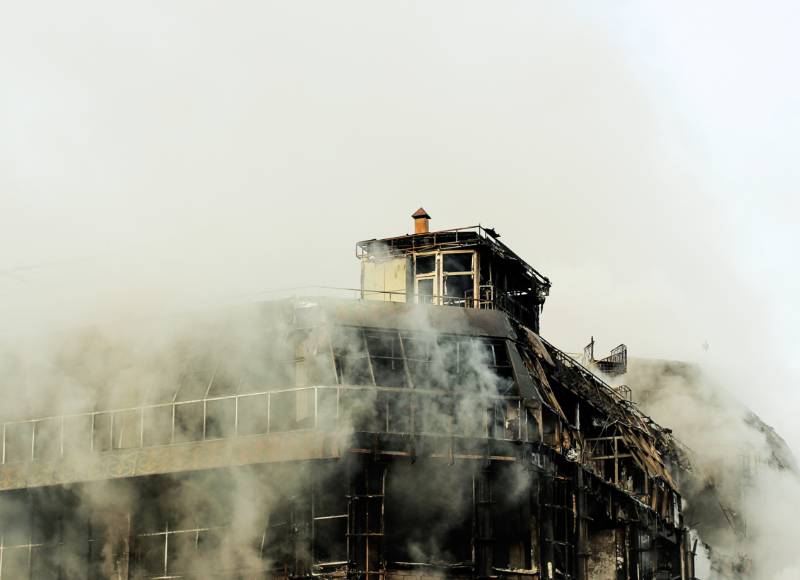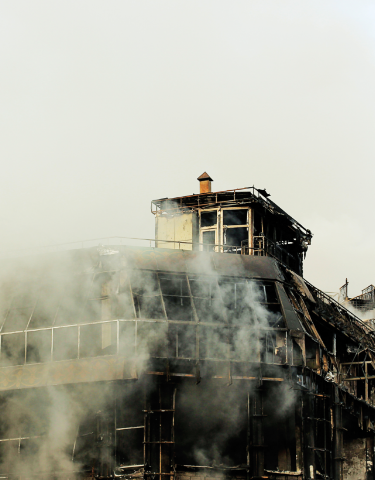Introduction
The Sigachi Pharmaceutical Industries Manufacturing unit, located in Pashamylaram Industrial Area, is a major producer of Microcrystalline Cellulose (MCC). The MCC is used as a binder in tablets in various pharmaceutical industries, which is essential for producing a cohesive tablet during compression. On the morning of June 30th at 09.10 am, a major explosion occurred at one of the manufacturing units, flattening a three-story building. The government confirmed 44 deaths and 34 workers sustained injuries. This accident again brought industrial risks and safety into the spotlight, where many managements are still compromising on the safety standards, putting the workers’ lives at risk. This article delves into the importance of safety and security audits in industries and disaster risk management strategies to prevent such incidents in the future.
An ISO Certified Company
Sigachi Industries has been certified with ISO 45001:2018, ISO 9001:2015 and Sigachi Industries has been accredited with prestigious certifications pertaining to medicine manufacturing and exporting to various countries. The ISO 45001:2018 is an international standard that deals with the Occupational Health and Safety Management System (OHSMS). The OHSMS mandates the organisation to sustain employee safety, reduce workplace risks, and create a healthier environment for the workers. The ISO 9001:2015 deals with the Quality Management systems, and it emphasizes a proactive organization-wide approach to managing the risks that emerge in conducting its operations.
Examining Lapses in Enforcing Workplace Safety Protocols
The Sigachi industrial accident has brought many instances of negligence to light through media reports. When the rescue teams arrived at Sigachi Industries, they could not find the display board, which is mandatory to indicate the kind of hazardous chemicals being used in the company’s operations. The above guidelines are made mandatory by the Central Pollution Control Board of India for the pharmaceutical industries to display at the main factory gate. In case of any adverse events, the rescue team will be fully prepared to contain the situation. The First Information Report (FIR) stated that despite repeated warnings and requests by the Sigachi employees to replace the outdated machinery, the management decided to run the factory without replacing the machines. The police suspect that this also could have led to the blast. The Times of India (TOI) news report highlighted that a December 2024 factory inspection report revealed the absence of an inert gas suppression system in panel boards, battery rooms, and UPS setups. The manufacturing unit did not have adequate fire extinguishing appliances, fire-resistant dampers, and heat or smoke detectors inside the factory premises. There was no structured emergency preparedness plan, like a lack of fire exits in factory buildings, and workers were not properly trained to use firefighting equipment. The company did not provide protective gear, such as shoes, gloves, or goggles, to workers who were working in a vulnerable environment. Additionally, the factory buildings have loosely laid electrical wiring, no rubber mats or insulating stands at the panels. Despite finding so many deficiencies in the factory units, no necessary action was taken to rectify them. The management decided to run the manufacturing unit without understanding the level of risk it posed to the workers and to the factory environment, ultimately ending with the biggest industrial disaster, killing 44 employees and injuring many others.
ISO Certifications Under Scrutiny
Sigachi Industries is an ISO 45001:2018 certified company. To obtain this certificate, the industry must complete internal and external audits, which involve various stages of audit with a comprehensive on-site evaluation. To retain this ISO certification, the industry must complete an annual audit. For recertification, the industry must undergo a series of internal and external audits every three years. Despite having a rigorous evaluation mechanism, how did Sigachi Industries have a lax implementation of a safe working environment for its workers?
Risk management solutions to prevent industrial disasters
India is an emerging global superpower. The pharmaceutical industry is one of the key sectors where India showcases its manufacturing power to the world. Indian Government initiatives like the Make in India initiative tries to attract foreign investment and transform India into a manufacturing hub of the world.
- To achieve this, we need to have robust Enterprise Risk Management that works on a proactive approach to identify and assess the risk using quantitative and qualitative metrics, to develop an appropriate response to reduce the risks that pose a deadly threat to industrial safety.
- The government must initiate a special probe to investigate the lapses found at Sigachi Industry to prevent future accidents. It must penalize the industries that are not following the prescribed safety standards, and non-compliance should be dealt with criminal liability and hefty fines.
- All industries must embed an operational risk management framework into their day-to-day processes. The industries can embed ISO 31000 guidelines, which deal with managing risk within the organization. All industries must conduct scenario analysis or simulation training to develop a tactical plan to handle the emergency.All industries must devise an annual emergency preparedness plan to handle any emergency that may arise in the future.
– This involves formation of an emergency planning team with designated personnel for critical incident management
– mapping the location of hazardous materials
– maintaining up-to-date site maps
– establishing communication protocols
– following an emergency checklist with procedures for every type of emergency
– including mechanisms for debriefing and business continuity post incidents
– reviewing and updating the plan after every incident by incorporating the lessons learned, changes to operations and new risks, if any.
- Frequent industrial accidents across the country will undermine investors’ confidence and may depict India as an unstable environment for global investment. The government should bring all industries under the Indian Occupational Safety and Health Information Network (INDOSHNET) for periodic safety audits, and the audit details should be maintained at a centralized database at the national level.
- The integration of advanced technological systems within industrial operations and the use of risk mitigation strategies are crucial for managing operational risk and establishing safe work environments.
Sustainable and genuine economic progress can be realized only by adopting proactive strategies that uphold operational risk management excellence and prioritize human well-being.
The author of this blog is Naveen.N, an Assistant Professor and ERM professional, currently teaching at the Department of Criminology and Criminal Justice Science, Agurchand Manmull Jain College, Chennai.















